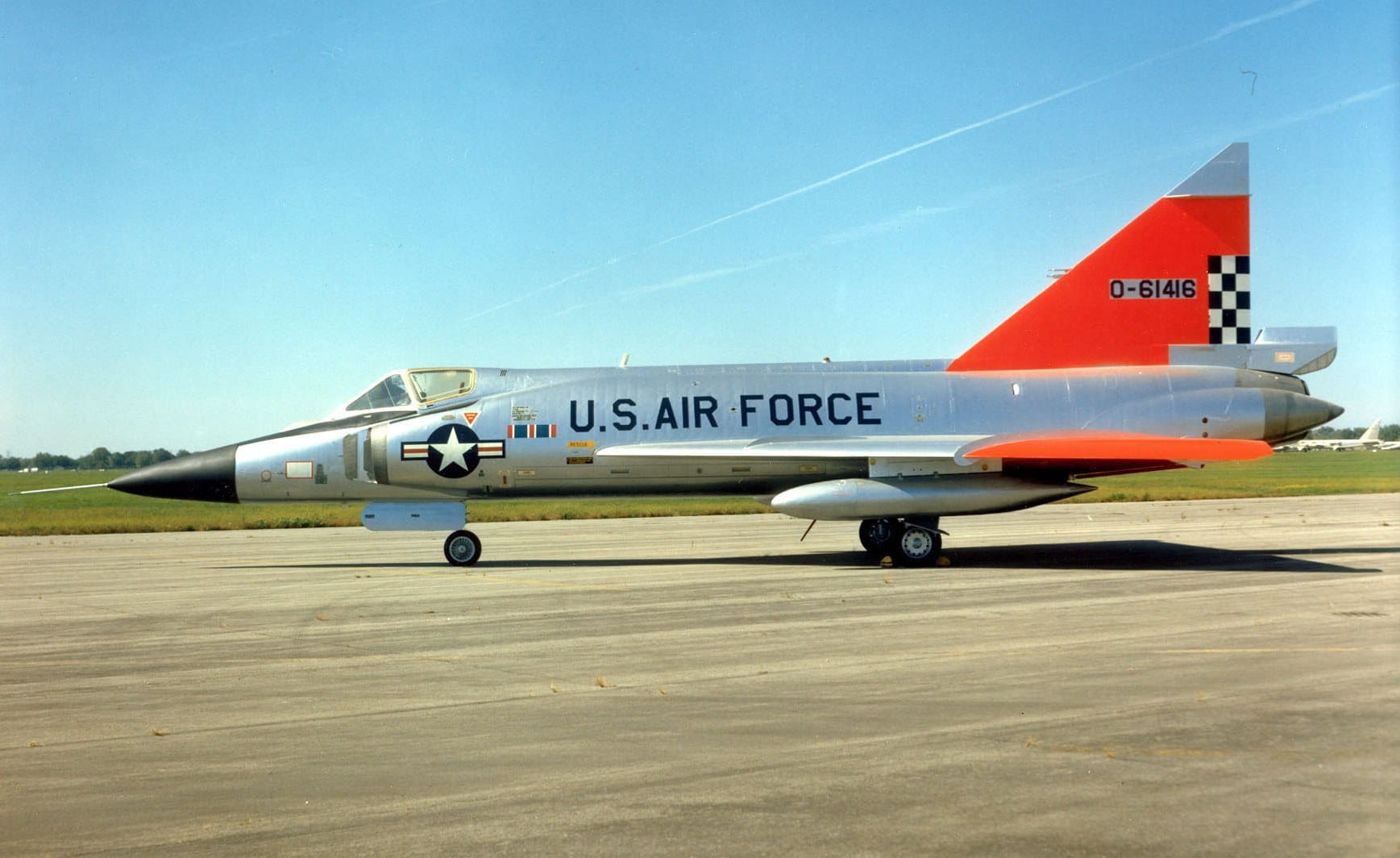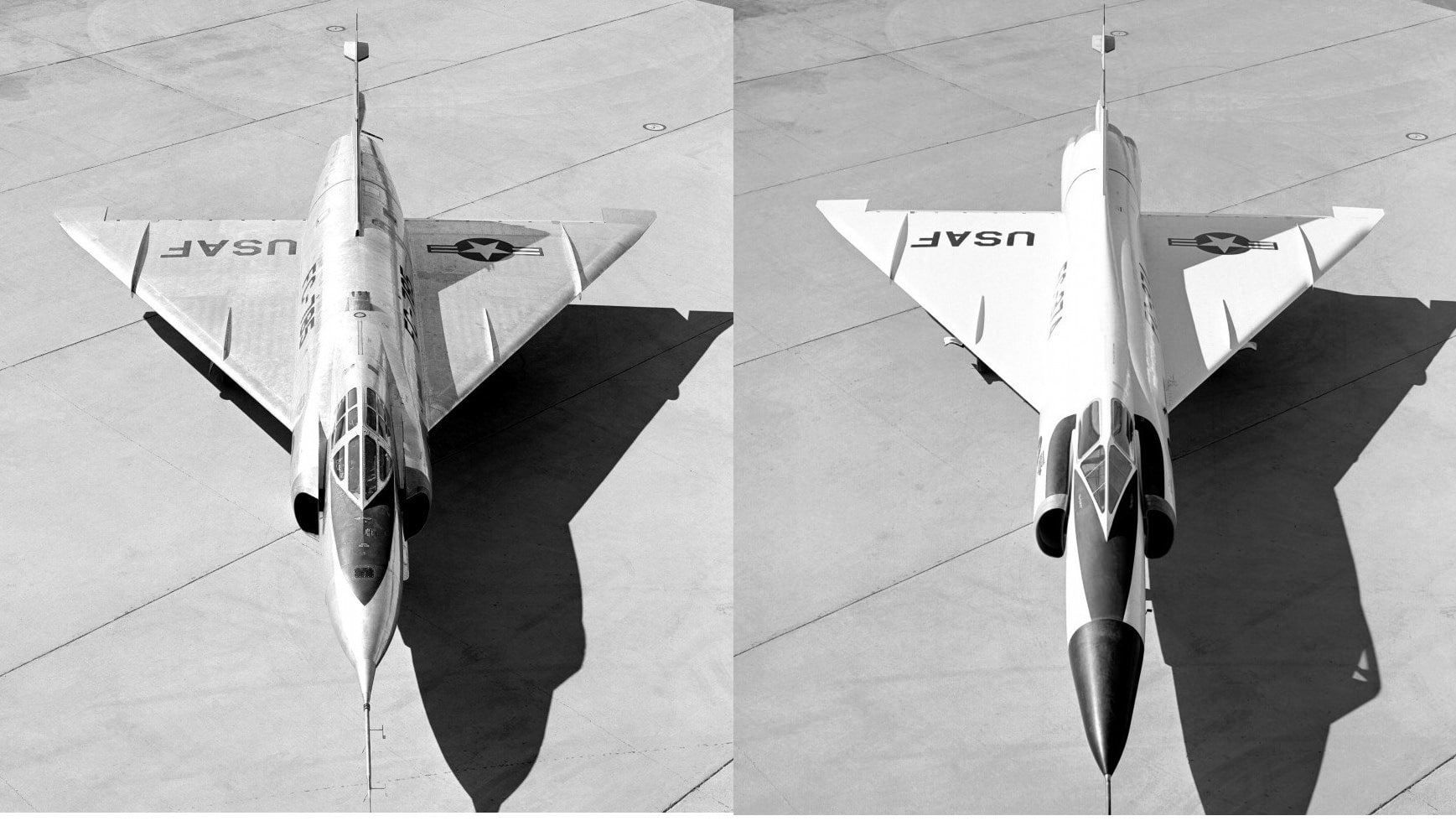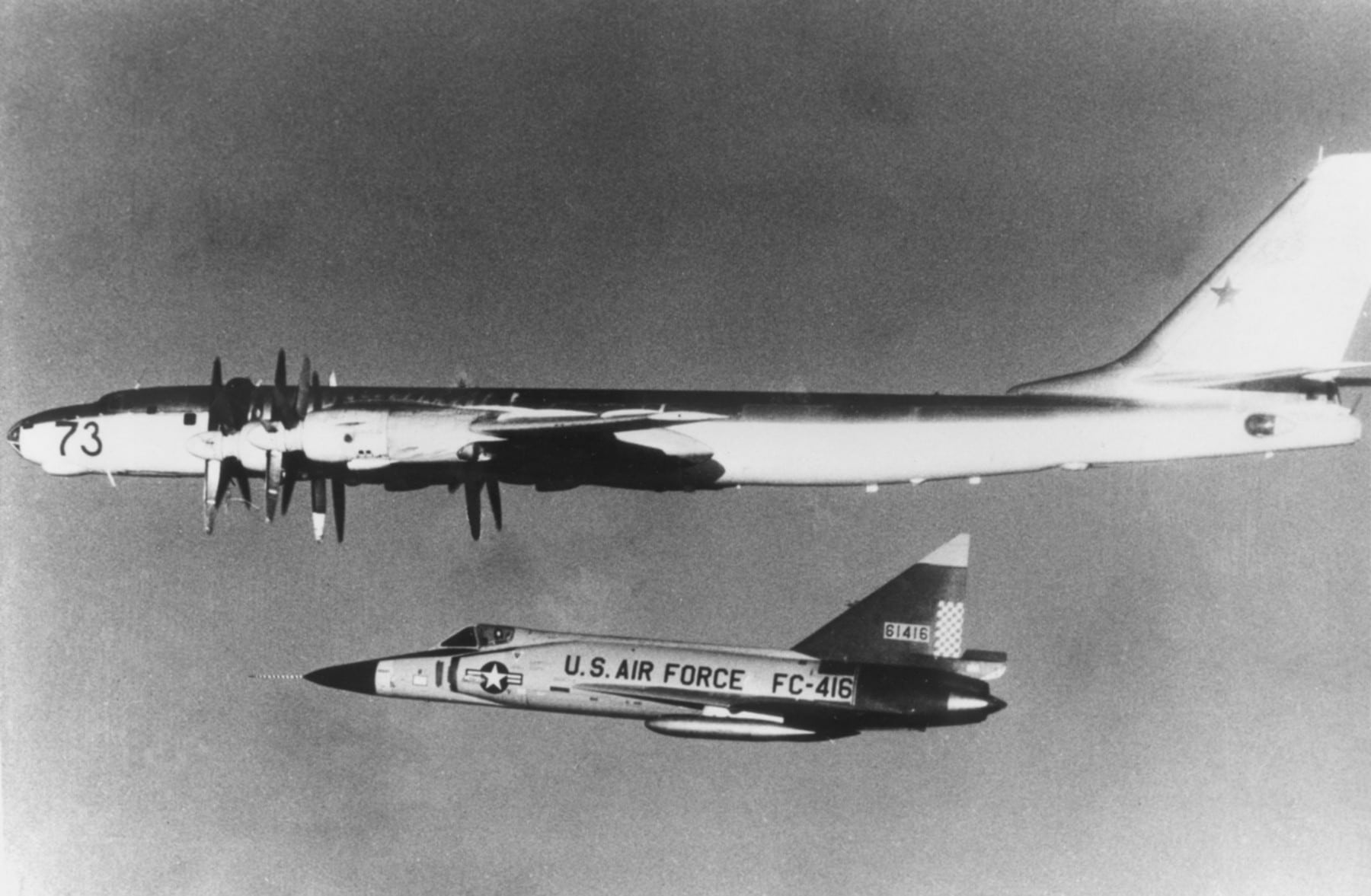The F-102A Delta Dagger Interceptor Was a ‘Round The World Cold-War Warrior
Convair’s F-102A Delta Dagger served with distinction as an Air Defense Command (ADC) interceptor with the United States Air Force (USAF) and with the Air National Guard (ANG) for twenty years.
Commonly referred to as The Deuce, the F-102A was the first operational delta-winged supersonic jet interceptor to see service with the USAF and ADC. But the design of the F-102, which was drawn to compete in a 1948 USAF competition to place in service a new “ultimate” interceptor and derived from Convair’s XF-92A delta-wing research aircraft, required major revisions before the jet was ready to enter service.

Thank Goodness (and Pratt & Whitney) for the J57!
Initially, the YF-102 prototypes were both underpowered due to engine development snags and slow due to a phenomenon called transonic drag. The engine issues eventually led to the F-102 being powered by the Pratt & Whitney J57 axial-flow turbojet engine with afterburner- the power plant used in such designs as the North American F-100 Super Sabre, the Vought F-8 Crusader, and the Douglas A-3 Skywarrior. After the first YF-102 first flew on 23 October 1953, the aircraft’s performance was deemed unsatisfactory (read: it was a dog) and drove Convair back to the drawing board.

Area Rules
Transonic drag occurs as an aircraft approaches supersonic speeds. Without slogging through the physics involved, the phenomenon was causing especially high drag in the forward fuselage around the canopy, at the engine intakes, and along the sides of the fuselage aft of the wing leading edge.
The Convair engineers lengthened the fuselage of the aircraft by some 11 feet. They also narrowed the canopy and redesigned the engine intakes. However, the real difference maker in the revised design was the narrowing of the fuselage aft of the wing leading edge and widening it forward of the vertical stabilizer- employing an area rule.

Origins of the Coke Bottle Curve
Now I don’t know if there was a Coke bottle sitting on some engineer’s desk when that “Eureka” moment took place, but we do know that incorporating the Whitcomb Area Rule (AKA the transonic area rule) into the design solved the F-102’s transonic drag problem.
The fuselage width was reduced from just aft of the wing leading edge and widened aft of the wing trailing edge. Fairings were added aft of the wing trailing edge and extending well beyond the afterburner on both sides of the jet’s fuselage.
Combined, these changes resulted in the Deuce’s waspish figure- resembling the shape of a Mark 1 Mod Zero Coca-Cola bottle as much as anything. Aircraft designed to operate in the transonic speed ranges, like the Convair B-58 Hustler, Northrop F-5 Freedom Fighter, T-38 Talon, and many others, have employed the area rule ever since.
The redesigned F-102 prototype, dubbed the YF-102A, first flew on 20 December 1954.

Tri-Angular Shapes
So now that Convair had a supersonic design and an engine to power it, the company received a contract to produce the Delta Dagger. Other features of the revised F-102A design included primarily aluminum alloy construction with some titanium in the structure. The low-mounted swept delta wing had a leading edge sweep of 60 degrees. Those wings had wing fences mounted inboard and outboard along with two-section hydraulically-actuated elevons at the trailing edge of each wing. The vertical stabilizer was triangular in shape with a hydraulically-actuated trailing edge rudder. The surface area of the vertical stabilizer was increased early in production of the F-102A.

No Guns for This Interceptor
The F-102A also employed a pair of hydraulically-actuated airbrakes mounted at the base of the vertical stabilizer. A braking parachute was housed between the airbrake surfaces, meaning it could only be used when the airbrakes were deployed. The revised engine intakes employed splitter plates to reduce drag and turbulence along the fuselage. The Deuce was not armed with any internal guns- it had a ventral weapons bay just aft of the nose gear to carry Hughes GAR-series (AIM-4) Falcon air-to-air missiles. In addition, folding-fin aerial rockets (FFARs) could be fired from mounts in the weapons bay doors. Though not initially designed to carry drop tanks, the ability to carry two 230-gallon drop tanks was later added.

Chilly Willy and the Bears
The F-102A first entered service in April 1956 with the 327th Fighter Interceptor Squadron (FIS) at George Air Force Base (AFB) in Victorville, California. Of the 889 F-102As built before production ended in September of 1958, the majority were operated first by ADC squadrons, many of which were based in warm sunny locales like Elmendorf AFB in Alaska, Thule Air Base in Greenland, and Keflavik Air Base in Iceland. These cold-soaked but alert Deuces intercepted hundreds of Soviet Tupelov Tu-95 Bears, Tu-16 Badgers, Myasishchev M-4 Bison, and many more during their Cold War service.

